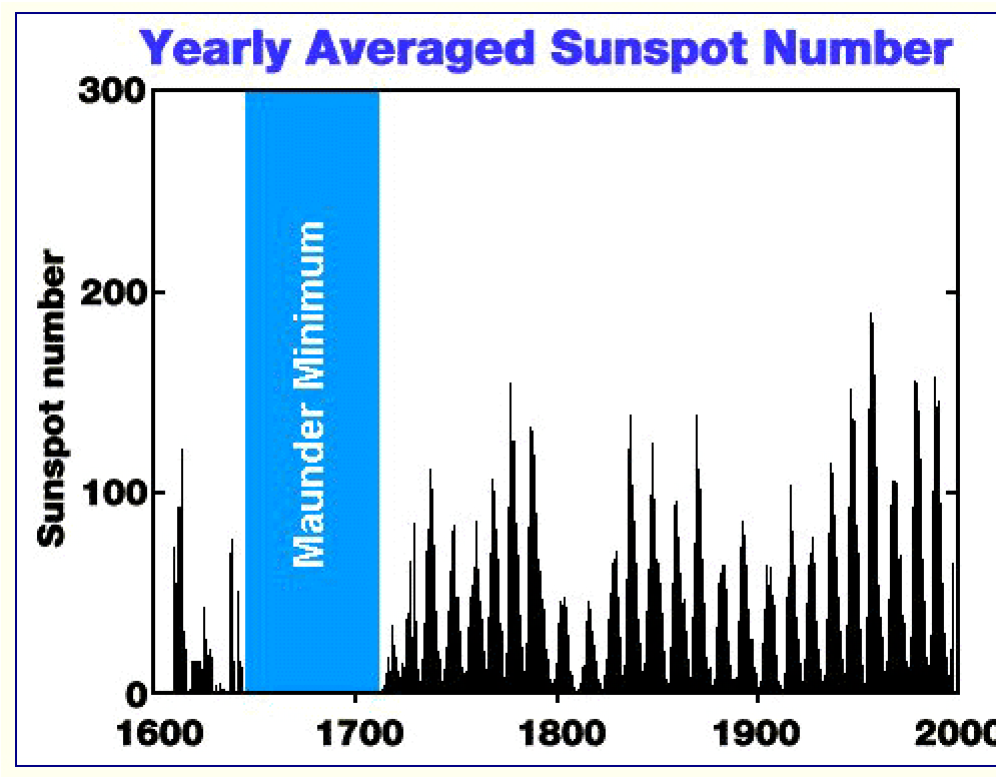Part of the Casswiki article series History and Natural science
The Maunder Minimum is a period named after the English solar astronomer E.W. Maunder, who charted an interval of drastically reduced sunspot activity between the years of 1645 and 1715. At normal activity levels, the sun may produce around 45,000 sunspots over a period of 30 years. During the Maunder Minimum, one 30 year period had only around 50.
Additional data indicates that the sun, during this period, expanded as well as slowed its rotation. This produces the effect of less heat reaching the earth, and indeed the period coincides with the Little Ice Age, that caused parts of the globe to experience very harsh winters. Another effect is that less radiation reaches the world during such periods of reduced solar activity, consequently affecting the Carbon-14 dating method.
The precise processes and mechanisms of the sun are, as yet, not entirely understood. However, it is known that the Maunder Minimum is not an unique occurrence. Data gathered from ice cores and recorded observations, suggests this phenomenon to be part of the natural processes of the sun. Some estimates have a total of 18 periods of decreased sunspot activity in the last 8,000 years.
Since approximately the middle of the last century until present day there has been a significant spike in solar activity. The findings indicates that the sun has been more active over the last 60 years than it has been at any point in the past 1,150 years.
According to the Cassiopaeans, our solar system is a binary system, and the sun has a brown dwarf companion. When this twin of the sun comes into proximity, one effect of such close proximity is that the sun will have a decrease of sunspot activity. The Maunder Minimum is a candidate for one such period when the twin of the sun may have passed close, and would have been visible from Earth.
Graph:

